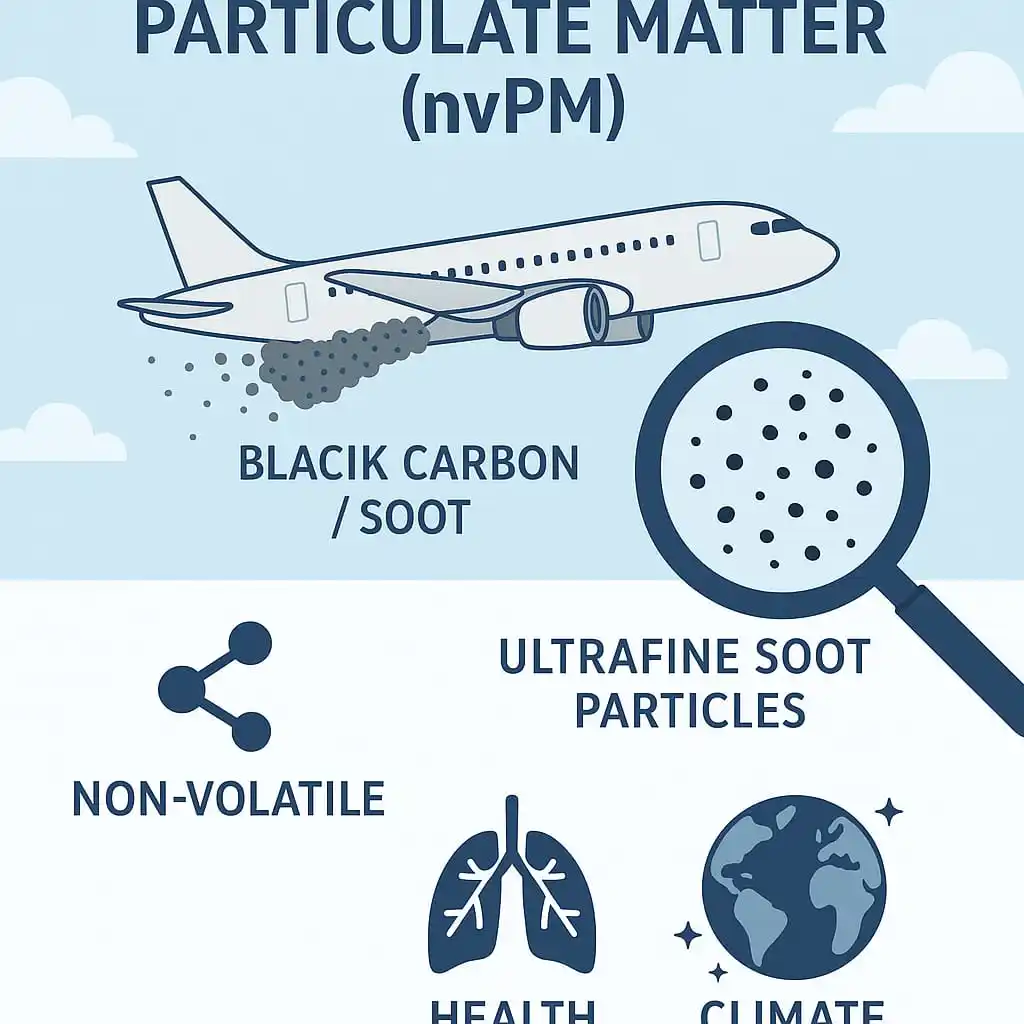
Aviator Fady
June 16, 2025 at 08:43 AM
✈️ Non-Volatile Particulate Matter (nvPM) refers to tiny solid particles emitted from aircraft engines that do not evaporate under normal atmospheric conditions. These are primarily soot or black carbon particles produced during the combustion of jet fuel.
🔬 Key Characteristics of nvPM:
▪️Non-volatile: Unlike volatile particles (e.g., unburned hydrocarbons), nvPM remain solid after emission and do not evaporate.
▪️Ultrafine: Typically less than 100 nanometers in diameter.
▪️Carbon-based: Composed mainly of elemental carbon (soot).
▪️Emitted during incomplete combustion, especially at high engine power settings.
🏥 Health & Environmental Impact:
▪️Health: Can penetrate deep into lungs and bloodstream, causing respiratory and cardiovascular issues.
▪️Climate: Contributes to global warming by absorbing sunlight (black carbon effect).
▪️Air Quality: Affects local air quality around airports.
📏 ICAO Standards and Measurement:
ICAO Annex 16, Volume II includes certification standards for nvPM:
▪️Measured as:
▶️Mass concentration (mg/kg of fuel burned)
▶️Number concentration (particles/kg of fuel)
▪️Testing is conducted using a specialized sampling system under specific engine conditions.
⚙️ Mitigation Strategies:
▪️Improved engine design for better combustion.
▪️Use of cleaner fuels (e.g., Sustainable Aviation Fuel - SAF).
▪️Engine maintenance to ensure optimal performance.
